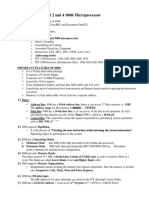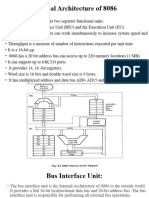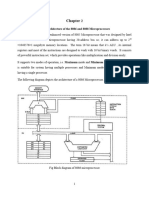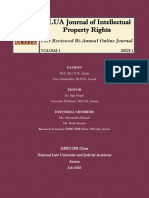0% found this document useful (0 votes)
13 views22 pages8086 Microprocessor
The document provides an overview of the Intel 8086 microprocessor, detailing its architecture, key features, and instruction set. It also explains the implementation of a binary search algorithm using assembly language in the EMU8086 emulator, including segment definitions and code structure. The 8086 microprocessor is significant in computing history and laid the foundation for the x86 architecture used in modern PCs.
Uploaded by
samanvithapavuralla0975Copyright
© © All Rights Reserved
We take content rights seriously. If you suspect this is your content, claim it here.
Available Formats
Download as DOCX, PDF, TXT or read online on Scribd
0% found this document useful (0 votes)
13 views22 pages8086 Microprocessor
The document provides an overview of the Intel 8086 microprocessor, detailing its architecture, key features, and instruction set. It also explains the implementation of a binary search algorithm using assembly language in the EMU8086 emulator, including segment definitions and code structure. The 8086 microprocessor is significant in computing history and laid the foundation for the x86 architecture used in modern PCs.
Uploaded by
samanvithapavuralla0975Copyright
© © All Rights Reserved
We take content rights seriously. If you suspect this is your content, claim it here.
Available Formats
Download as DOCX, PDF, TXT or read online on Scribd
/ 22























































































